
Cultural fire at Buffalo Speaks Reserve preserves American Indian tradition
November 16, 2020 | Topics: Places, Stories
By Jim Uhrinak and Matt Smith
Photos by Eddee Daniel
If Buffalo Speaks Reserve is the crown jewel of the Niagara Escarpment along the east side of the Horicon Basin, the Kolterman Indian Mound Group is one of the facets that makes it sparkle.
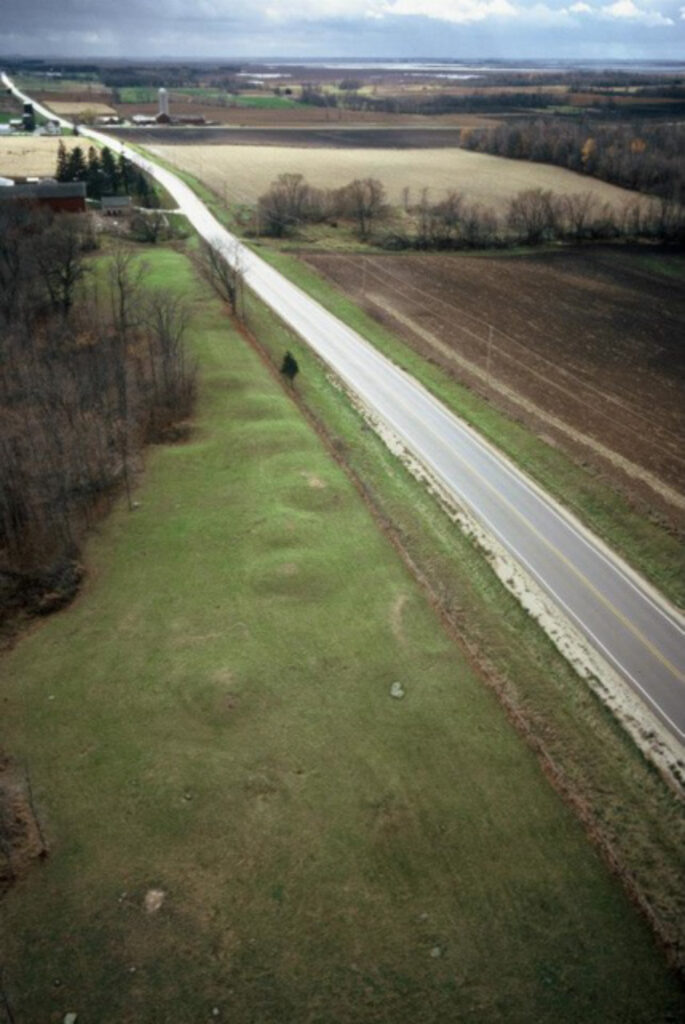
Image courtesy Milwaukee Audubon Society
For many profound reasons American Indian peoples have repeatedly revisited this site ever since Ice Age mammoth hunters watched the retreat of glaciers from the Rock River valley of the Horicon Basin. The Kolterman Indian Mound Group, for which this burn location is best known, is recognized for both Woodland-era conical mounds and Effigy Mounds, as well as older petroform (intentional Indian boulder placements). From an Indian perspective Kolterman is part of a connection across the subcontinental divide between the Rock River watershed (which flows to the Mississippi) and the Milwaukee River watershed (which flows to the Great Lakes).

The Kolterman Mound Site was originally located on the prairie-savanna transition of Eastern Wisconsin. Intentional Indian management, which included regular burning, made this place a savanna garden of abundant resources and we know that mound sites were built in places where prairie and savanna provided open vistas.
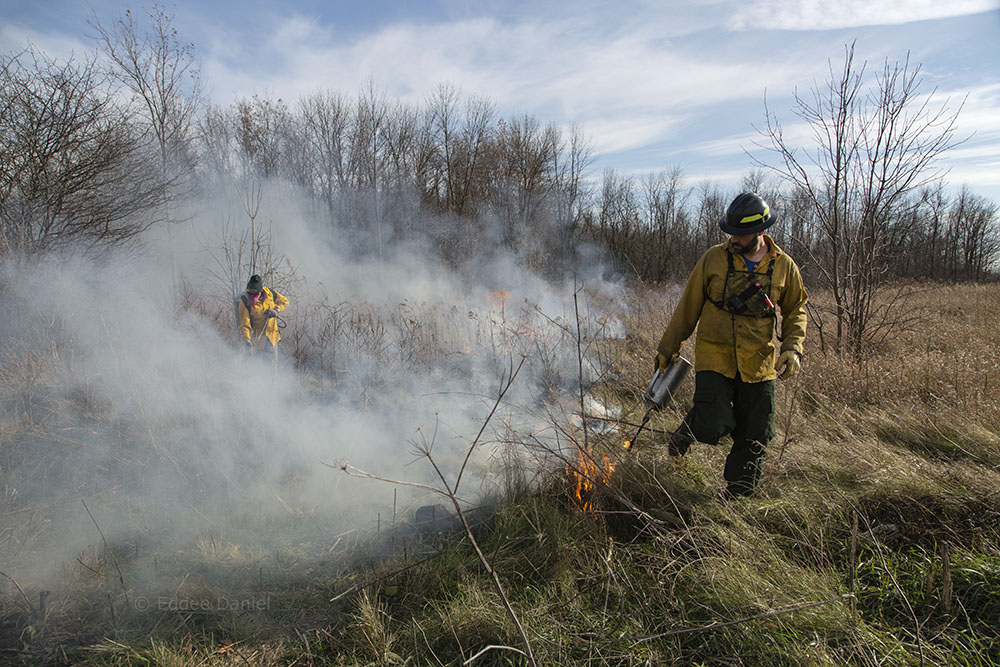
Matt Smith guides Milwaukee Audubon Society in maintaining a tradition of cultural fire, as well as ecologically appropriate controlled burning. Properly prescribed fire selectively favors herbaceous vegetation and fire-adapted species such as bur oak. Without a regular recurrence of fire the savanna would convert to woodland, which would deprive the mound site of its original open character.
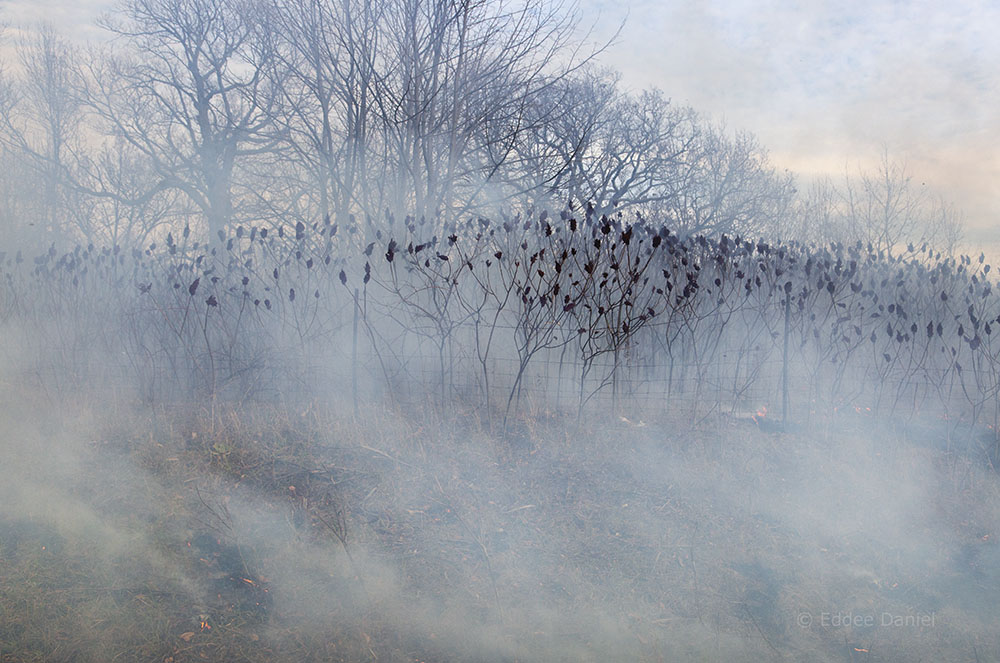
A large native clone of staghorn sumac had been expanding on the site, which was obscuring the mounds and becoming a low diversity thicket. Some sumac was cut last year with limited treatment, but prolific root sprouting makes it difficult to control this species. Without follow up treatment by fire or herbicide, the sumac rebounds. We used fire because it is the easiest and most natural management tool, as well as being culturally appropriate.

The best time to view the mounds is right after a complete and thorough burn that totally blackens the ground, revealing the mound forms and petroform boulders on a breathtakingly dramatic canvas of black. The second-best time is when a short regrowth of tender green carpets the site, and the third best time is when these features are lightly dusted with snow.
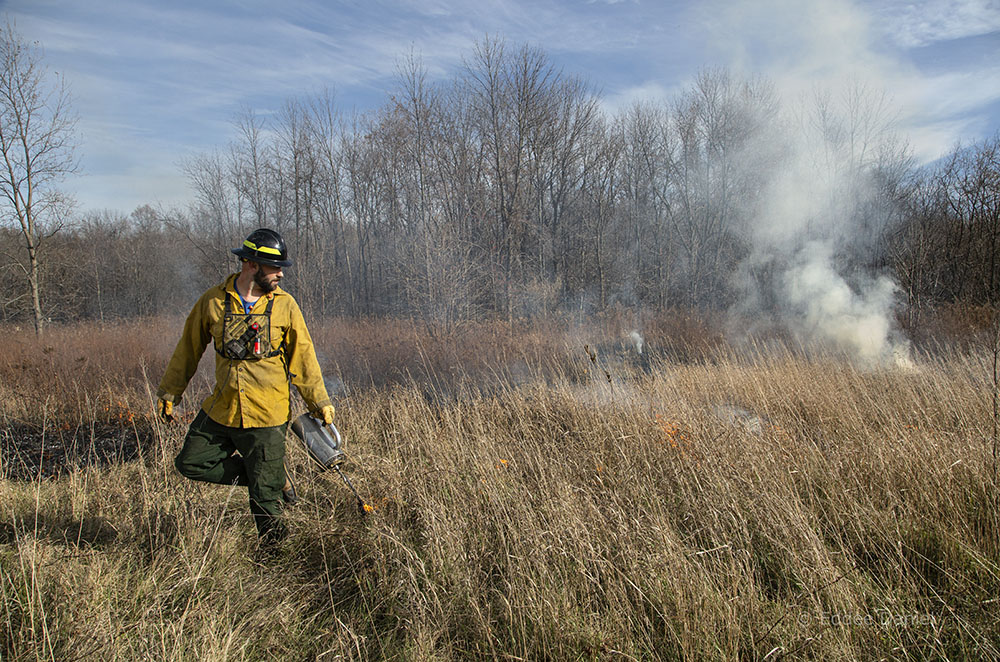
In these photos Matt is doing the work of his ancestors, albeit with modern tools, such as a rake and drip torch, as seen here, rather than the elk antler that might have been used by traditional Elk Clan managers.

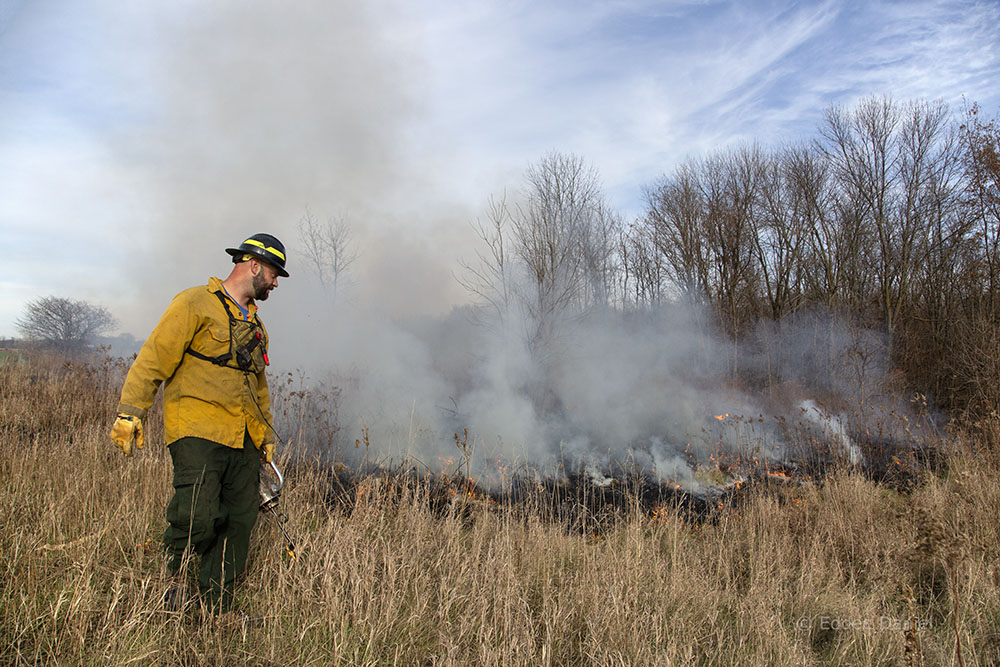
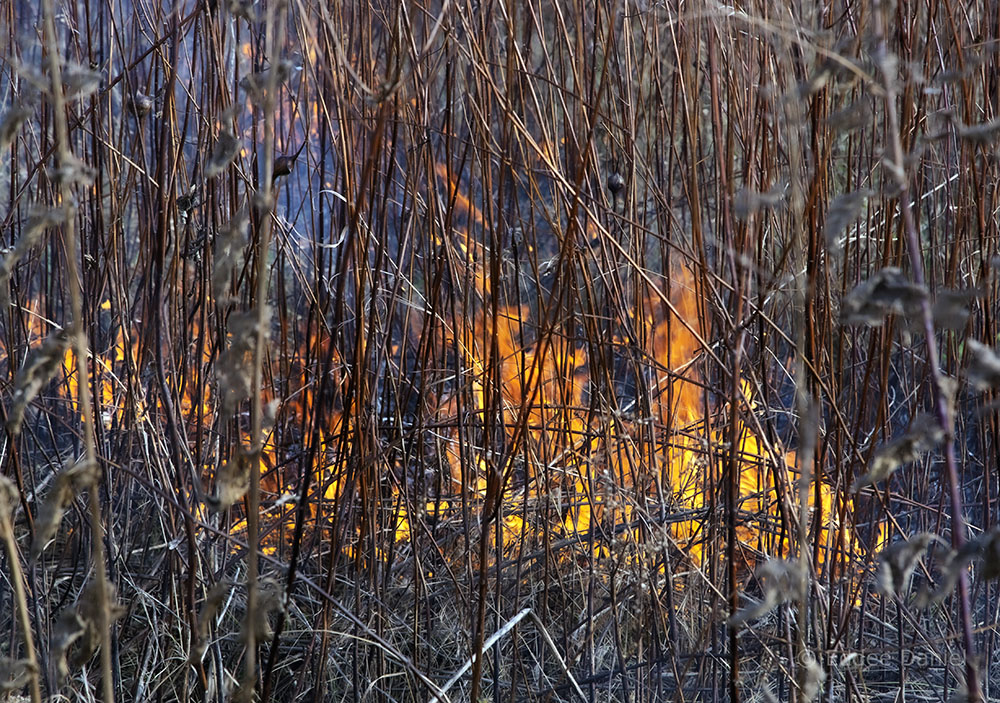
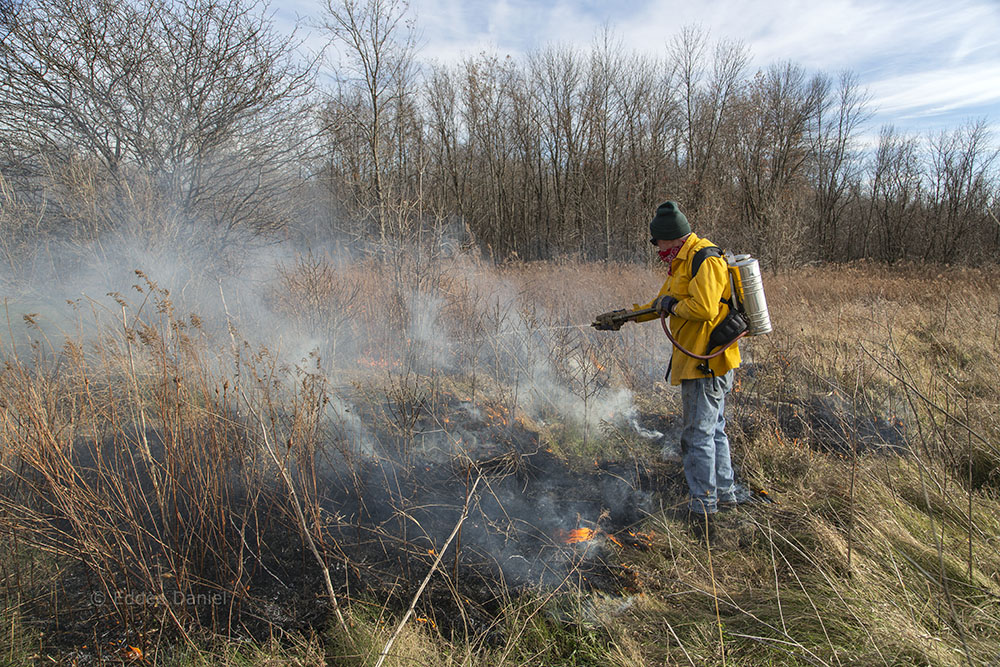
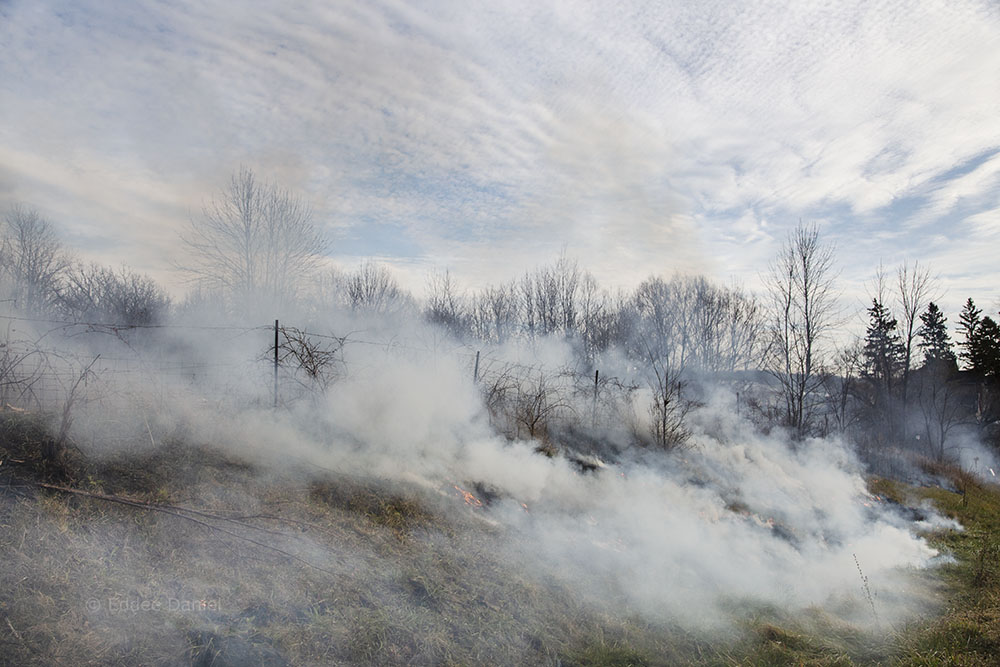
The heavy smoke evident in this burn resulted from wet ground and the condition of site fuel after a rainfall earlier in the week. The effects of even partial burns accumulate year to year and one cannot expect that one burn will completely redirect plant succession on a humid site. Managing both the benefits of smoke and its concerns are some of the burn leader’s work.
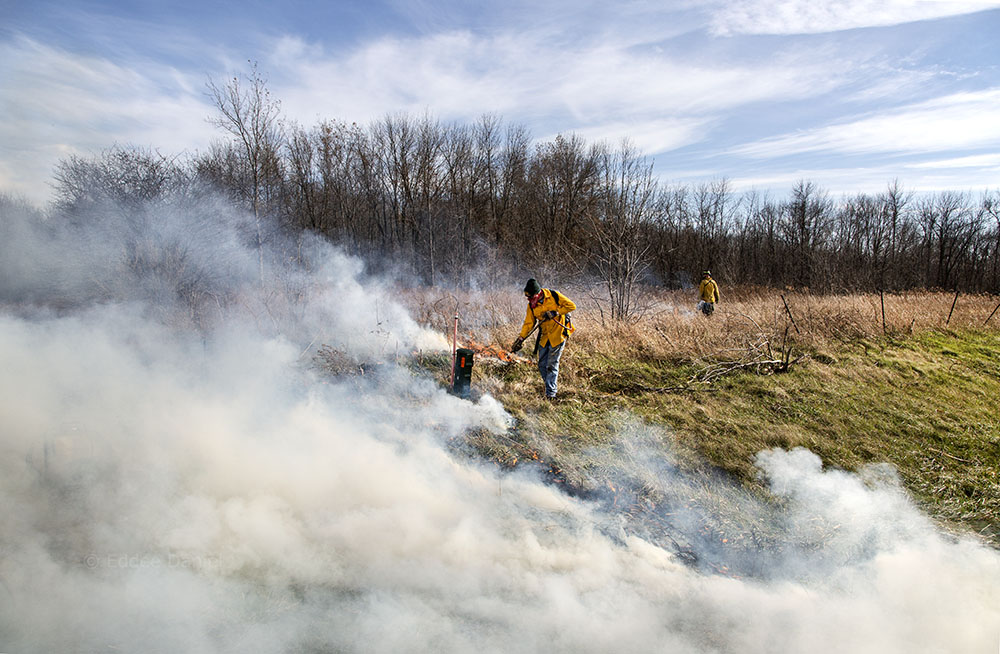
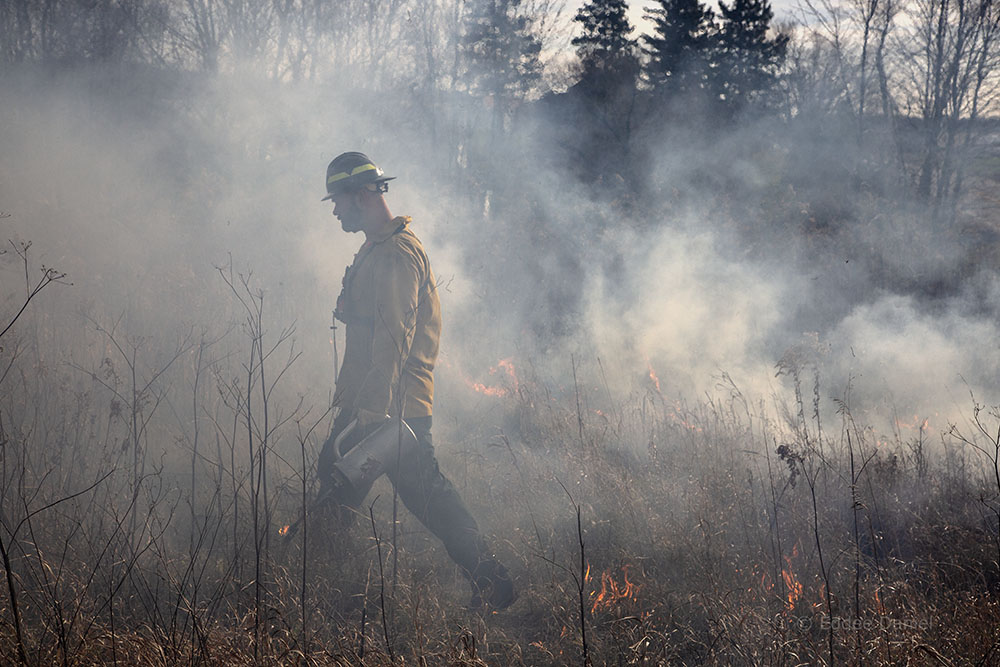
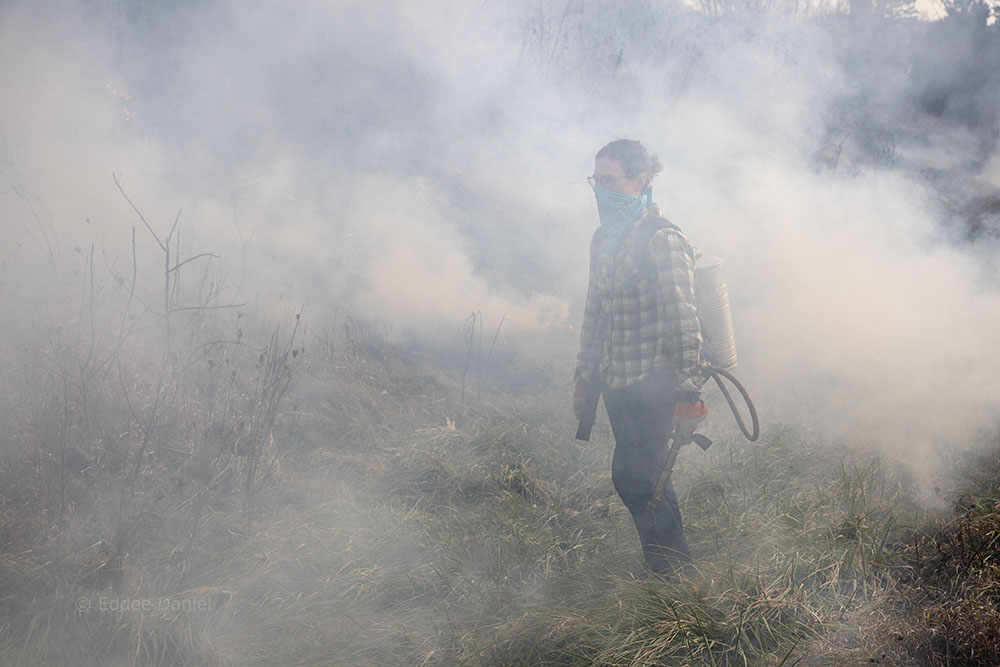
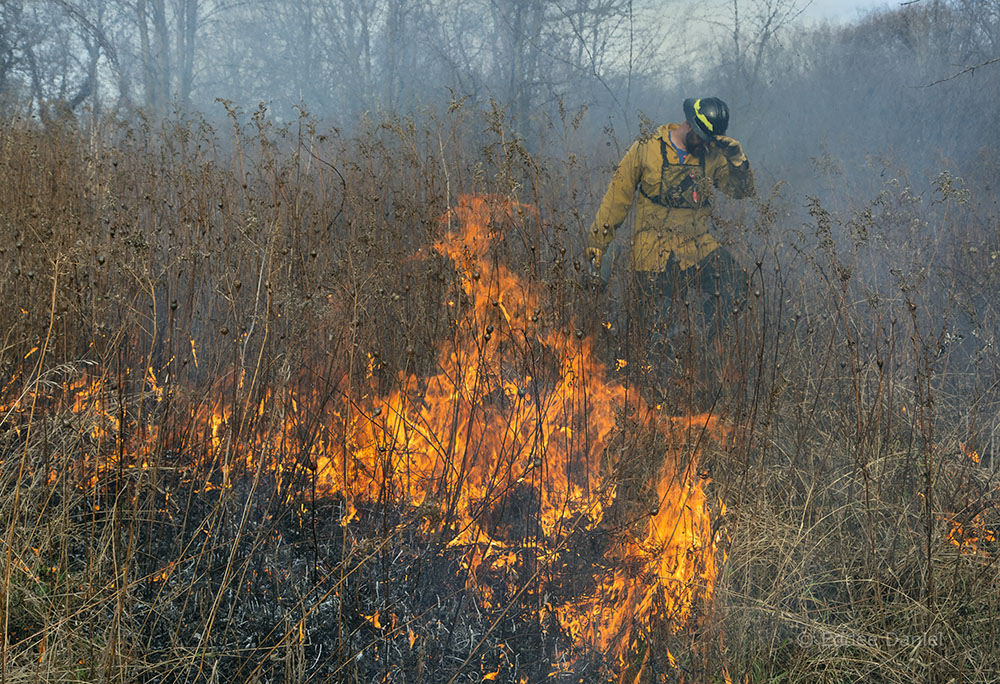
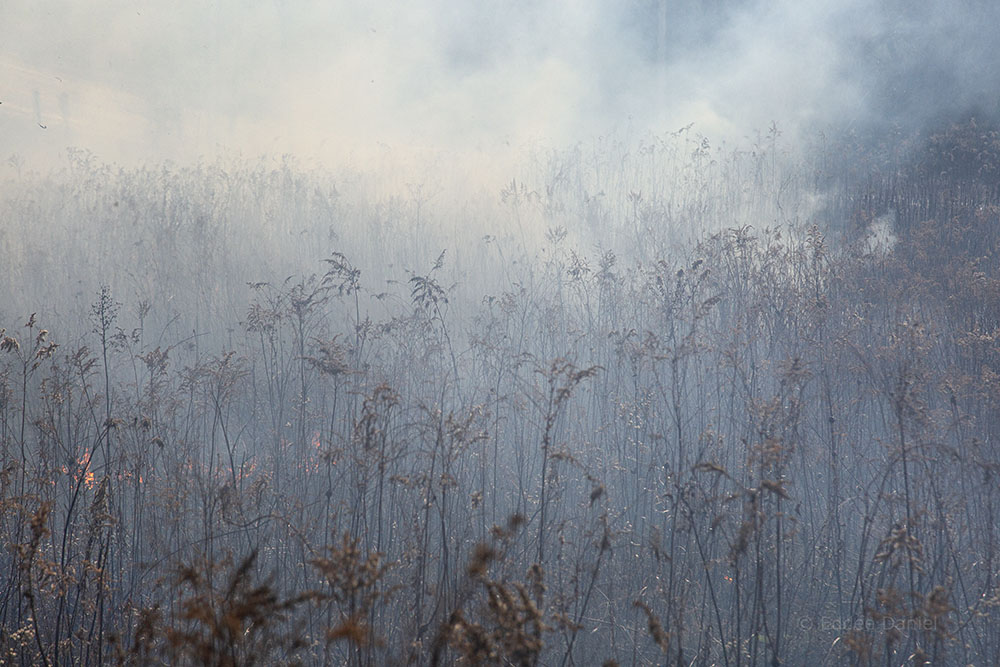
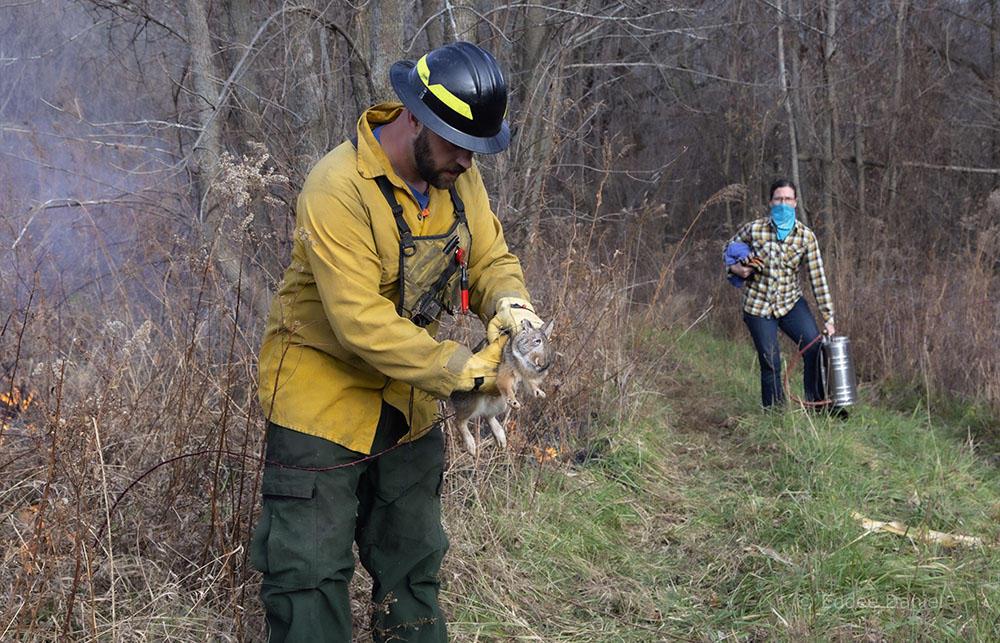
(healthy rabbits, and other wildlife, have no trouble evading the controlled burn)
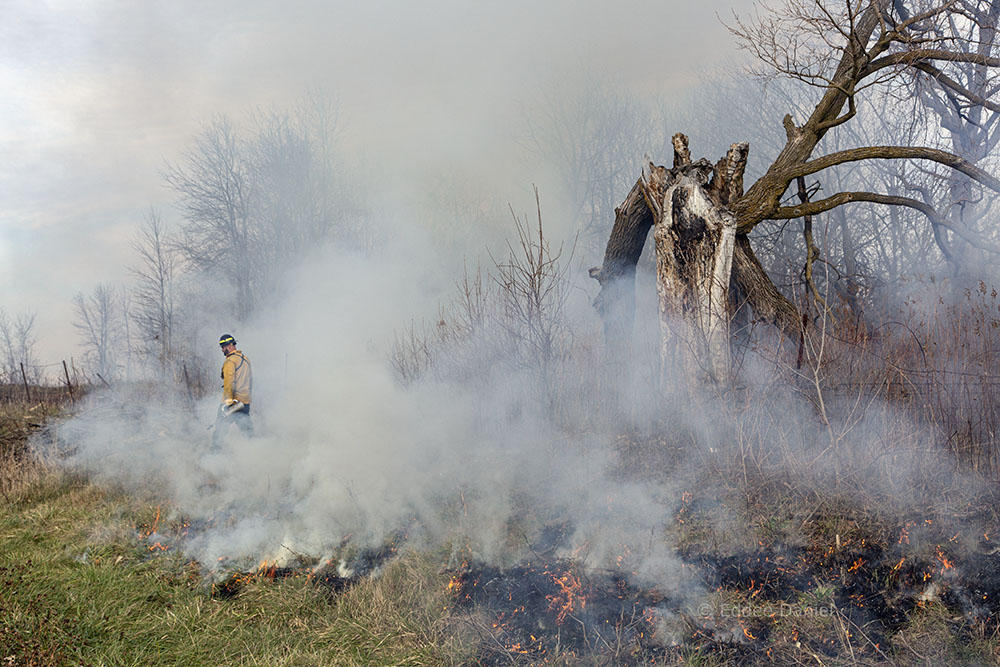
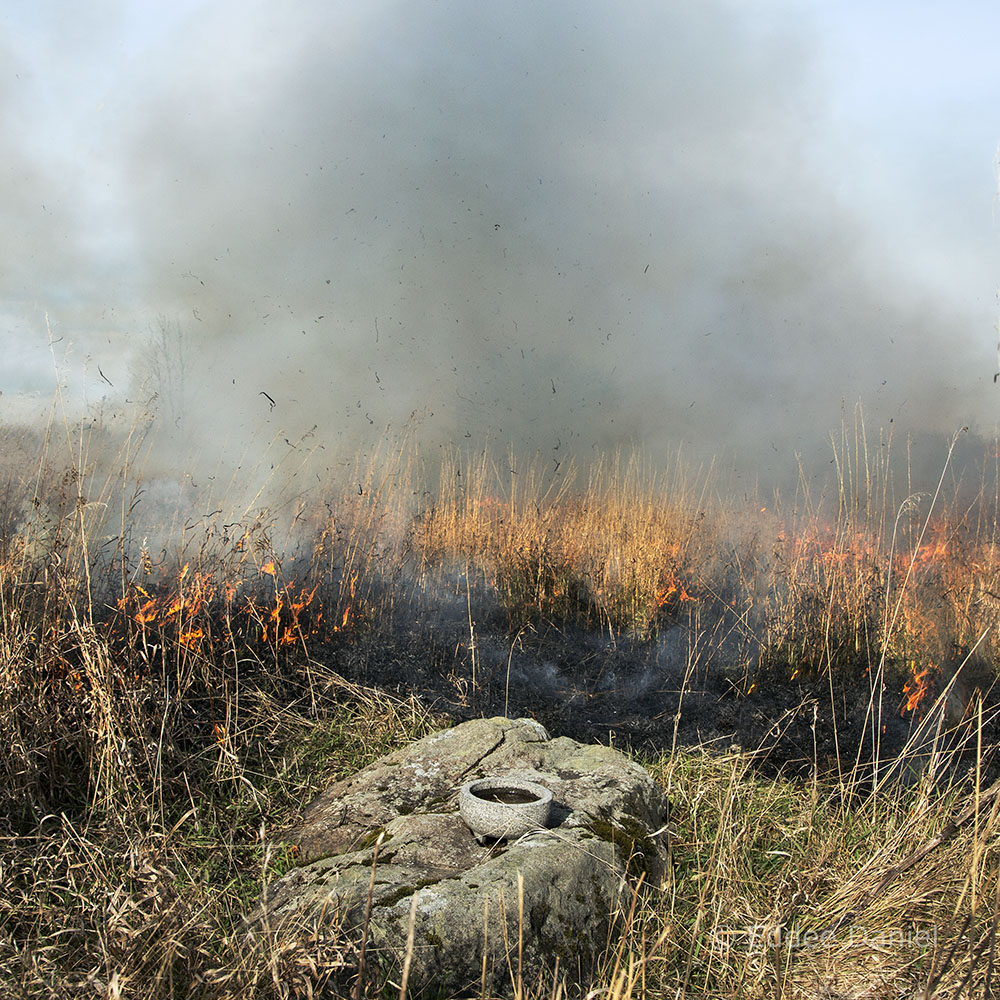
Buffalo Speaks Reserve is owned and managed by the Milwaukee Audubon Society. The burn was conducted in cooperation with Riveredge Nature Center and the Effigy Mounds Initiative.
Jim Uhrinak is a consulting arborist, land restorationist, and Milwaukee Audubon Society Conservation Chair, who writes and speaks on cultural landscapes of the Midwest. Matt Smith is Research & Conservation Manager at Riveredge Nature Center; he recently inherited the records and artifacts of his Indian ancestors who were force marched on the historic Trail of Tears. All images by Eddee Daniel, except as noted. Eddee Daniel is Project Director of A Wealth of Nature.

